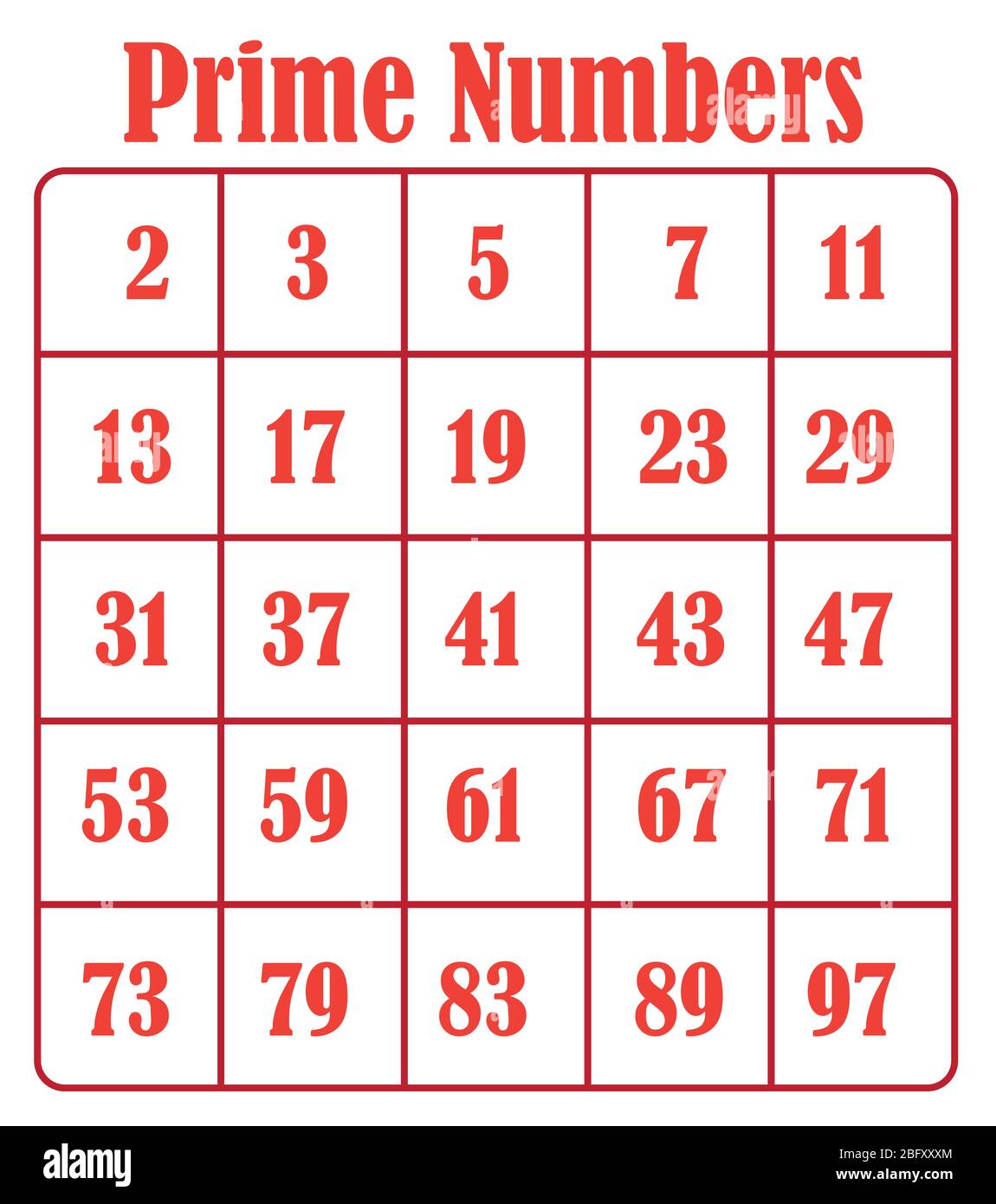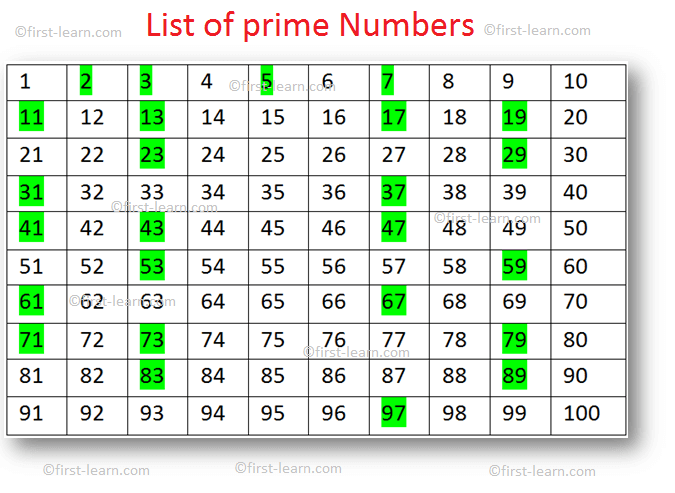

However many scientists and mathematicians are still searching to find it as part of the Great Internet Mersenne Prime Search.

One of the most famous mathematicians of the classical era, Euclid, recorded a proof that there is no largest prime number. It also the only even prime number – all other even numbers can be divided by themselves, 1 and 2 at least, meaning they will have at least 3 factors. Smallest prime numberĢ is the smallest prime number. Prime numbers can continue well past 100. There are 25 prime numbers between 1 and 100.
#A list of prime numbers to 100 how to#
How to work out if a number is a prime number or not. 13 ÷ 6 = 2 remainder 1.ġ5 is not an example of a prime number because it can be divided by 5 and 3 as well as by itself and 1.ġ5 is an example of a composite number because it has more than two factors. Dividing a prime number by another number results in numbers left over e.g. What is a prime number?Ī prime number is a number greater than 1 with only two factors – themselves and 1.Ī prime number cannot be divided by any other numbers without leaving a remainder.Īn example of a prime number is 13. Here we explain what exactly this means, give you a list of the prime numbers children need to know at primary school and provide you with some practice prime number questions and examples. A prime number is a number that can only be divided by itself and 1 without remainders.


 0 kommentar(er)
0 kommentar(er)
